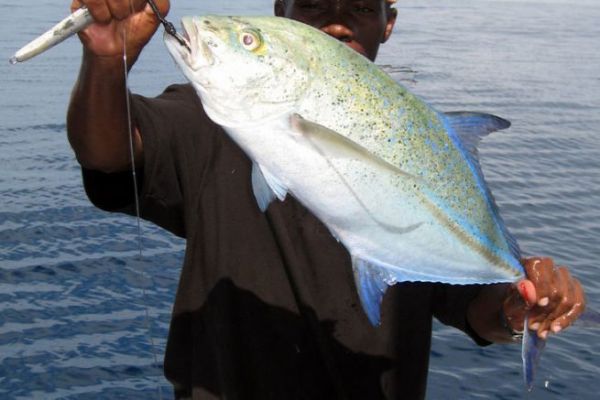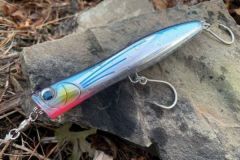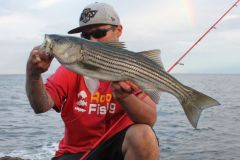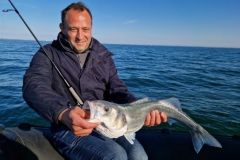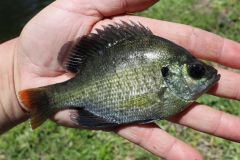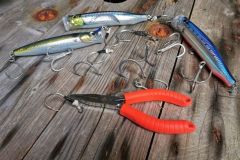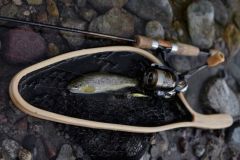Scientific name
Caranx melampygus (Cuvier, 1833)
Morphology
The blue-spotted trevally has a massive silvery body dotted with black and blue spots. Its body is tall and laterally compressed. Its head is marked by a wide mouth with large lips. Both dorsal and ventral fins are sickle-shaped, extending to the tail with a pronounced azure-blue edge.
Fishing spots
Blue jacks are found in the warm waters of the Indian and Pacific oceans. They can be found in coastal lagoons and near coral reefs. They can also be found close to the shallows, where GT hunts can be triggered, sometimes including this solitary fish.
Blue-spotted trevally fishing techniques
This exotic-colored trevally is fished mainly with poppers and medium-sized jigs. It can also be caught on longlines close to the boat. Blue trevally are solitary fish, sometimes mixing with schools of bighead trevally. They are particularly active at dawn and in the evening. They can be stalked with 30 to 50 lb tackle, the difficulty being to get past the big GTs hanging around.
Reproduction
Blue-spotted trevally reach sexual maturity at between 30 and 40 cm for the female at 2 years of age, and 40 to 50 cm for the male. Reproduction is by external fertilization, with the female's eggs being fertilized by the male. Pelagic larvae drift until they are able to swim ashore.
Size and weight
- Catch size (legal minimum): none, I recommend 40 cm
- Size at sexual maturity: 30 to 40 cm
- Average size: 50 cm
- Maximum size/weight: 1 m (20 kg)
- World record: 13.24 kg (Clipperton Island, France, 13/04/2012)
Good to know
Its magnificent coat of bright colors, a harmonious blend of yellow, green and blue, is quickly lost once the fish is out of the water.

 /
/ 